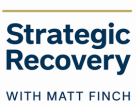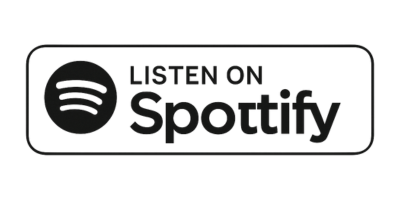Now Playing: Episode #21 — State Alchemy: The Hidden Science of Managing Your Mood
This page contains a full audio episode (54:57 duration) of the Strategic Recovery Podcast 🎧. Below the player you’ll find Show Notes and Resources to help you apply what you hear — tools, exercises, and practices for real-world ✨ state transformation.
🧠 How to Rewire Your Brain’s Chemistry, Regulate Emotion 💫 on Command, and Build Unshakable States for Recovery & High Performance ⚡
Strategic Recovery Field Notes ⚗️
How to master your emotional state to end cravings, prevent relapse, and access peak performance on demand.
🎙️ Welcome to Strategic Recovery with Matt Finch
We blend neuroscience, psychology, and higher consciousness to help you end addiction, regulate emotion, and awaken your full potential. In this episode, we unlock your inner control panel for rapid state shifts — no substances required.
🩸 Part 1 — Physiology: Master the Body, Master the Brain
Your body isn’t just a vehicle — it’s the laboratory where recovery happens. Every posture, breath, and movement sends signals that sculpt emotion. Slumped chest and shallow breath? The brain reads danger; cortisol rises and motivation drops. Shoulders back, eyes up, diaphragm breathing? The brain hears safety; dopamine stabilizes and clarity returns.
🧬 The Neurobiology of Motion
Movement is medicine. Muscle contractions light up the motor cortex (action), prefrontal cortex (focus), and limbic system (emotion) — flipping on the circuit breakers of mood. Each step releases BDNF (“Miracle-Gro for neurons”), repairs circuits, and raises your baseline of motivation.
Pair motion with oxygen optimization (box breathing, 4-7-8) to retrain the vagus nerve. Every slow exhale whispers to the brainstem: We’re safe now. Safety → clarity → cravings fade.
Try it now: 60 seconds of brisk walking or 10 deep breaths can begin to shift chemistry toward calm focus.
🔬 Example — The Executive & The Energy Crash
Bill, a mid-40s CEO, lived on caffeine by day and whiskey by night — not chasing a buzz, but stability. We swapped the evening pour for a cold plunge, magnesium glycinate, and rhythmic breathwork. Three weeks later: “I still get tired, but it’s a clean tired. I don’t need to numb it.”
💡 Case Study — Maria & The Morning Margarita
Single mom, two toddlers, sunrise tequila to function — not depraved, depleted. We rebuilt physiology: protein breakfast, morning sun, breathwork, laughter breaks. One month later: “I don’t crave tequila — I crave the walk to the park.”
🌪️ Example — Derrick & The 3 p.m. Crash
A carpenter post-opioids, Derrick relapsed at 3 p.m. daily. We installed a focus ritual: step outside, three deep breaths, whisper one thing he did well. Two weeks later: “I still get tired, but I don’t spiral. The world doesn’t shrink.”
🧘♂️ Reflection — Mini State Reset
- Sit upright; crown lifted.
- Inhale 4 • hold 4 • exhale 6 (×5 rounds).
- Roll shoulders back; soften jaw.
- Add a subtle smile to cue safety.
Feel that shift? Sympathetic “fight/flight” easing into parasympathetic “repair & recover.” That’s physiology alchemy.
🧠 Part 2 — Focus & Language: Directing the Mind’s Camera
Your attention is a creative force. Aim it at fear and shadows grow. Aim it at gratitude and the same world glows. Neuroscience calls this state-dependent perception — your brain edits reality to match your focus.
🎯 The Science of Focus
The Reticular Activating System (RAS) filters reality based on repetition and emotion. Tell it “I’m anxious,” and it finds proof. Tell it “I’m learning calm,” and it highlights cues that reinforce safety and progress. Where focus goes, energy flows — and neurochemistry follows.
1) 🙏 Gratitude Rampage
When cravings whisper, speak five gratitudes out loud. In ~90 seconds, dopamine rises, heart rate slows, limbic reactivity softens.
2) 🧭 The Solution Loop
Ask: What’s one small thing I can influence right now? Blood flow shifts from amygdala to prefrontal cortex. Panic → strategy.
3) 🫶 The A-Game Anchor
Picture those who need you at your best — child, partner, pet, clients. Service converts shame into strength and gives dopamine a mission.
🗣️ Language — The Alchemy of Words
Words aren’t descriptions; they’re instructions. Say “I’m stuck,” motor cortex slows. Say “I’m pausing,” flexibility returns. Language is mirror and map — refine the map, and the terrain changes.
🧠 Neural Mechanics of Self-Talk
Inner speech activates the same regions as spoken words. Hebbian learning (neurons that fire together wire together) means your repeated phrases become literal circuitry.
| Old Language | New Language |
|---|---|
| “I can’t handle this.” | “I’m learning to breathe through this.” |
| “I always relapse.” | “I’m mastering consistency one day at a time.” |
| “I’m broken.” | “I’m rebuilding stronger circuitry.” |
| “I’m behind.” | “I’m pacing myself for long-term strength.” |
| “This is too hard.” | “This is my training ground for transformation.” |
Pro tip: Pair new language with posture + breath (stand tall, eyes up, inhale 4 / exhale 6) to anchor it somatically.
📖 E + R = O — The State Equation
Event + Response = Outcome. Events are neutral; your trained state shapes your response. You can’t control every event, but you can pre-train your nervous system for wisdom under pressure.
🔄 Integrating the Triad — Real-Time State Shifts
- Change Physiology: stand, hydrate, breathe 4-6.
- Change Focus: name one controllable now.
- Change Language: speak encouragement aloud.
- Change Meaning: ask, “What is this craving teaching me?”
Loop until the urge dissolves. You’ve just transformed compulsion into consciousness.
⚡ Peak State Design
Cold shower → gratitude list → empowering mantra
Stretch → 10 breaths → “What matters most now?”
Journal wins → gentle music → forgiveness prayer
Ambient for serenity, hip-hop for power, drums for grounding; breathe with the beat
Repeat these rituals until your system memorizes coherence instead of chaos.
🧘♀️ Reflection — Anchor a State
- Recall a time you felt unstoppable.
- Re-enter it fully: see • hear • feel.
- Anchor gesture: fist/hand-to-heart/thumb-to-finger while breathing it in.
That gesture becomes a neurological “bookmark” for instant state recall later.
🌅 Closing Vision — Become Your Own Neuro-Artist
Paint each day’s mood like colors on a canvas — gold for gratitude, blue for calm, red for drive, green for compassion. Recovery’s goal isn’t neutrality; it’s vitality: a nervous system that can hold joy without collapsing and face pain without running.
🧩 Episode Takeaways
- You don’t fight cravings — you transmute them.
- The body is the fastest doorway; the mind is the sculptor; language is the seal.
- State mastery upgrades recovery from survival to self-evolution.
If this resonated, please share, review, or send to someone rebuilding their state from the inside out. Stay conscious. Stay compassionate. You are the alchemist of your own energy. 🌞
The Emotional Triad — Your Inner Control Panel
Every state you experience is shaped by three levers you can train: Physiology, Focus, and Language. Master these and you stop chasing states with substances — you generate them from within.
Physiology — Move the Body, Change the Chemistry
Your body is the fastest doorway into a new state. Breath, movement, posture, sleep, and sunlight reset your nervous system in real time.
- Use 4–6 breathing to switch out of fight-or-flight.
- Micro-movements: 60 seconds of walking, stretching, or shaking it out.
- Morning light + hydration to stabilize mood and energy.
Focus — Aim the Mind’s Camera
Where attention goes, emotion flows. The brain edits reality to match what you repeatedly focus on — fear or possibility, shame or growth.
- Run a 60-second Gratitude Rampage when urges spike.
- Ask, “What’s one thing I can influence right now?”
- Anchor on who needs you at your A-Game today.
Language — Program the Nervous System
Your words are not just descriptions — they are instructions. Repeated phrases become wiring patterns that either trap or free your state.
- Upgrade “I always relapse” to “I’m mastering consistency one day at a time.”
- Speak encouragement aloud while standing tall and breathing.
- End each day with one powerful, supportive sentence about yourself.
Start simple: choose one action per pillar each day. Over time, your brain learns that you are the one driving your state — not the craving.
Frequently Asked Questions — State Management for Recovery
Clear, high-performance guidance on cravings, emotional regulation, and using the Emotional Triad to support addiction recovery and peak states.
-
How do I change my state quickly when a craving hits?
Use the 4-step Triad Rescue: 1) Change your physiology (stand up, move, hydrate, breathe 4–6). 2) Change your focus (name one thing you can control right now). 3) Change your language (say out loud, “I can ride this wave.”). 4) Change the meaning (“What is this craving trying to teach me?”).
Spend 60–120 seconds looping those steps. You’re not fighting the craving; you’re changing the chemistry and giving your nervous system a new script.
-
What if I’m too tired, anxious, or depressed to do state work?
Start micro. Instead of a full routine, pick a 30–60 second action: one slow breath cycle, a single lap around the room, stepping outside for fresh air, or placing a hand on your heart and saying, “I’m here and I’m trying.”
When energy is low, the goal isn’t perfection — it’s sending your nervous system a small signal of safety. Tiny, repeatable shifts compound into bigger state changes over time.
-
How often should I practice the Emotional Triad (Physiology, Focus, Language)?
A great target is three intentional reps per day: a morning priming ritual, a midday reset, and an evening wind-down. Each can be as short as 3–5 minutes.
Every time you deliberately adjust your body, focus, and words, you’re training your brain that you control the state dial now — not the substance, not the craving, not the mood swing.
-
Can state management replace therapy or medications for recovery?
No. State management is a powerful complement, not a replacement, for professional support. For many people, the best outcomes come from combining tools: therapy, medications when appropriate, community, and daily state practices.
Think of the Emotional Triad as your self-regulation toolkit between appointments. It helps you navigate urges and emotions more skillfully while your deeper healing work continues.
-
What should I do when the tools work sometimes but not always?
That’s normal. You’re working with a living nervous system, not a light switch. When something “doesn’t work,” treat it as feedback, not failure.
Ask: “Was I exhausted, under-fueled, or overwhelmed?” “Did I give it enough time?” and “What tiny adjustment can I make next time?” Consistency + curiosity will beat intensity every time.
-
How do I create a simple daily ‘State Playbook’ I can actually stick to?
Choose one action per pillar that feels realistic: e.g., Physiology = 5-minute walk, Focus = 3 gratitudes, Language = 1 affirmation. Stack them to key moments (after waking, before lunch, before bed).
Write it down, keep it visible, and aim for “done imperfectly” instead of “perfect or nothing.” Your Playbook should feel like support, not punishment — a set of gentle levers you pull to keep your state aligned with your recovery.
These FAQs are starting points, not rules. Experiment, notice what shifts your state the most, and keep refining your own State Playbook as you grow.
🙏 Thank you for being part of the Strategic Recovery community.
👉 Click Here and Right Click to Save As to Download>>
🎧 Available on your favorite platform:






Leave a Reply